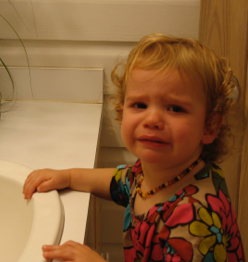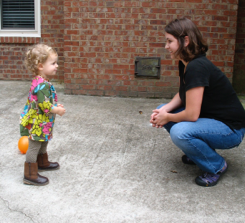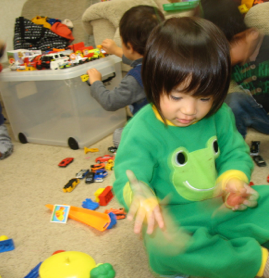Ineffective consequences
-
1.Saying the command alone is ineffective--action is necessary until they understand and comply.
-
2.Yelling
3. Getting angry
Consequences that are too harsh
1.Time out longer than 2 or 3 minutes
2. Threatening to leave him when you are out of the home.
-
3.Leaving the house while you are home.
-
4.Threatening to throw away all his toys if he doesn’t put them away. If you don’t do it, your child learns that you don’t do what you say. If you do do it, you are actually punishing yourself more than your child, since you are the one who paid all that money for them. Putting the toys out of reach for half a day is a much better consequence! Better yet, instead of an ultimatum, make putting the toys away a game you play together--see who can be the fastest to put them away, or pretend to be postmen delivering mail to homes.
5. Telling her that the people around her are looking at her and laughing at her. This will make peer pressure even stronger when she is older, and will make it that much harder for her to stand up and do what is right when it is different from what everyone else is doing.
You don’t need a very big arsenal of consequences for toddlers.
If your child fails to stop when you say,“Stop!” then pick him up and carry him for a bit, explaining to him why you are carrying him. Do not let him down even if he squirms. In a bit you can put him down, but do not let go of his hand until you have had a chance to practice in a safe place such as your home or yard. You need to be especially strict about this command, because there are times when it can save your child’s life.
If your child dawdles when you say,“Come,” help her obey by counting slowly to 3. You can vary the speed--counting more slowly when she is not responding, and then more quickly as she begins to move toward you. If she has not moved by the time you reach 3, then pick her up and carry her to where you had called from. There is probably no need to do anything beyond that. Just don’t say, “come” unless you are willing to get up and get her if she doesn’t respond, or you are teaching her that it is o.k. to not do what mommy says.
If your child starts to reach for something hot, immediately pick him up and put his hand under uncomfortably hot water (not hot enough to burn) while saying “Hot” When they understand that it hurts, they stay away when you say “hot.”
If your child throws a toy, say, “You can throw balls. You must not throw toys.” If your child throws a toy again, simply pick up the toy and put it out of reach. It usually only takes 2 or 3 times till they get it and quit throwing anything but balls. Don’t despair if you child is so stubborn that you have to put away every last toy---just don’t stop doing this until he complies. And keep reminding yourself that if he is this stubborn at 2, no matter how hard this seems right now, that it will be WAY, WAY easier making him follow instructions when he is 2 than when he is bigger than you at age 12 or even 15!!
There might be occasions when you need to discipline for other things, and a time out will probably work--one minute per year old, so 2 minutes for a 2 year old and 3 minutes for a 3 year old. The time-out spot can be in a high chair, a counter top that they can’t climb down from (as long as you are close enough to keep them from falling if they try to get down.) Other options are an area rug or bottom step of a staircase--you just have to stay within reach to enforce staying put, since they can get up by themselves. 2 minutes may seem too short to make any difference, but it should be plenty. For stubborn children you may have to do it every few minutes until they give up and obey you, but usually once is enough. A kitchen timer can be handy for this so she can know when she can get up.
Temper tantrums are best handled by ignoring them--when they lose the audience, they don’t have a reason to carry on. Some mothers have locked themselves in the bathroom for a minute or two till their toddler comes looking for them (you can’t do this if your house in not baby-proofed, or if your child can get out of the house by himself.) It is easier to ignore if you are at home, but if you are out somewhere, pick up your child and take him to a quiet spot and stay close, but ignore him until he has composed himself. The thing about temper tantrums when you are out, is that YOU are probably the one who should have a time out! Think about it--did you keep him out during nap time, or did you fail to give him a snack at snack time (toddlers are hungriest about mid morning and mid afternoon) or did you take him shopping until he was bored silly because you failed to take any toys along, or take any play breaks? If the tantrum is really your fault, just try to distract your child with whatever you can find at hand, and determine to not push your child beyond what he is able to handle next time. Decide not to go out during nap time, and always pack food and toys to take along. (see ideas for a toy bag below.)
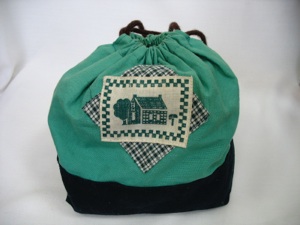

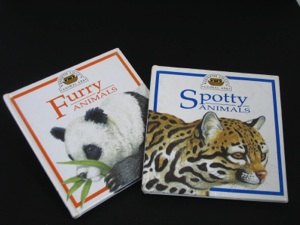
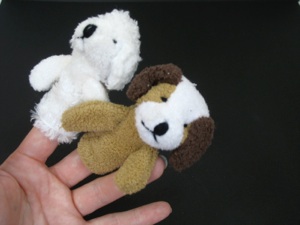
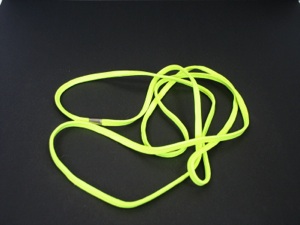
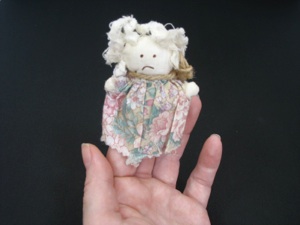
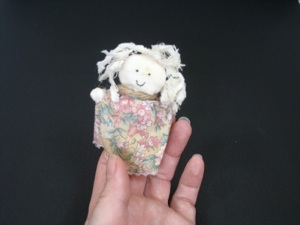
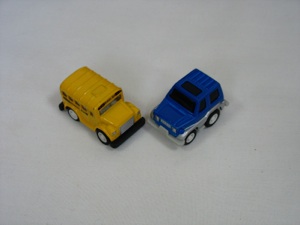
You can avoid all kinds of problems if you prepare ahead of time. Buy or make a small bag that you can grab whenever it’s time to go out. Rotate toys every month or two so the toys don’t lose their appeal. Below are a few ideas of the kinds of toys you can fill it with. Save these toys for when you are traveling--if they play with them every day, they don’t distract.
Elastic band
-
1.A long elastic band can be used to make a 2 or 3 person train--a sort of follow the leader game that a 2 year old can do.
-
2.Lay it on the ground for “jumping” practice (at first stepping over it is the best they can do.) As they get the hang of it, you can stretch it around the front two legs of two chairs a couple of inches high and let them jump over it.
Obviously, toys that could get wrapped around a child’s neck should only be used with adult supervision!
Finger puppets
-
1.Make up a spur of the moment play for an audience of one
-
2.Use the puppet to ask your child questions
-
3.Play hide and seek--you hide one and let your child use the other puppet to find the hidden one
-
4.Make the puppet tickle your child
Toy cars
-
1.Let your child use your arms and legs for roads
-
2.Each of you take a car and see whose can go the farthest
3. Play follow the leader
Shape sorter
If your local dollar store (hundred yen store) doesn’t have a small shape shorter, make your own. Cut a hole in the top of a margarine tub lid, and fill it with small objects that fin through the hole you cut. Once your child gets the hang of it, include objects that don’t fit, too.
Obviously, small toys that can pose a choking hazard should only be used with adult supervision!
Books
Small books can be a great distraction, and they are just the right size that young children delight in carrying them around.
Happy/Sad doll
When your child is upset, pull out this doll and make it talk to your child about being unhappy. Experiment to see what works-- here are a few ideas to get you started:
-
1.The doll asks why he or she is upset
-
2.Make up a story for the doll to tell of why she is upset...”I’m upset, too, because...”
-
3.Make up ridiculous reasons that your child might be crying in the questions that elicit yes and no answers so your child can nod or shake her head
-
4.Make the doll cry when your child cries and stop crying when your child stops crying
Happy ending
Just having the doll talk to the child can be sufficient distraction to help your child regain composure. When doll and child agree that they are o.k., they can give each other a hug. Put away the doll until the next emergency.
Ways to make a doll
-
1.Use a baby sock to form the body and head. Sew or draw a happy face on one side and a sad face on the opposite side. Sew or glue on hair along the top of the head. Stuff it with batting and sew the end shut. Sew a seem to form legs if you like. Dress with a small doll dress, or use a different colored sock with the toe cut out to be a dress.
-
2.Adapt a small doll or finger puppet to have two faces (the second face could be on the other end under the skirt rather than front and back of the head.)
3. Draw a happy face and a sad face on two sides of a piece of cardboard
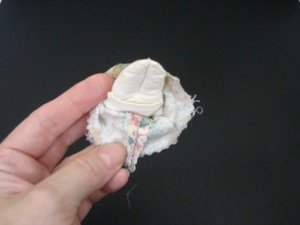

Poppers (poppers are sold in toy stores)
-
1.For sheer surprise value, nothing beats poppers. They look like rubber balls that have been cut in half. Turn them inside out, then wait for them to jump. They can jump several feet in the air, so the places you can use them are limited. But they can entertain a young child for quite some time!
-
2. For places that flying poppers would be inappropriate, put one in your closed fist, and let your toddler guess which hand it is in. If your child is too young to understand the game, put it away for a couple of months, then try again. This simple hide and seek game can entertain for quite some time. When your child gets the hang of it, let her hide it.
Parenting > Discipline > Sample Consequences for Toddlers
Parenting > Discipline > Sample Consequences for Toddlers
